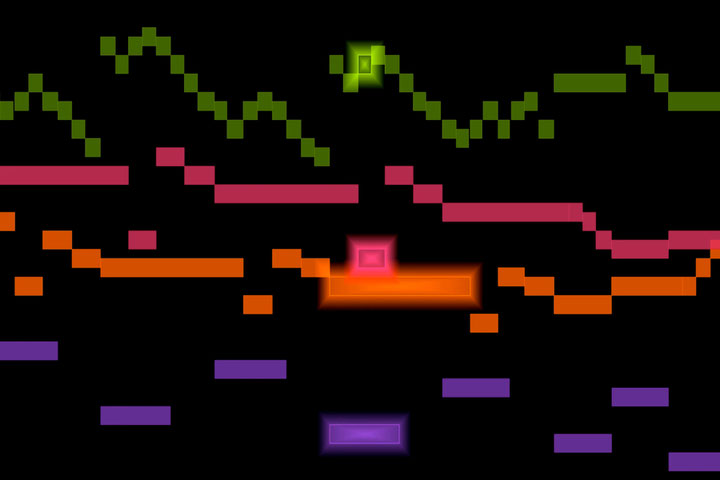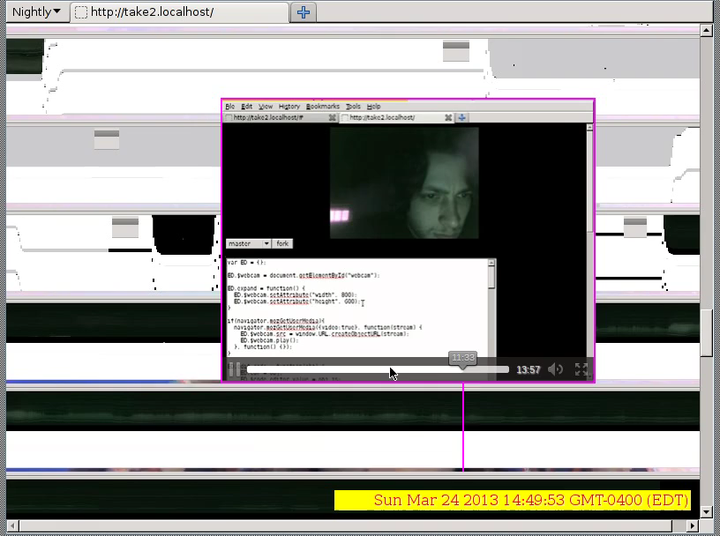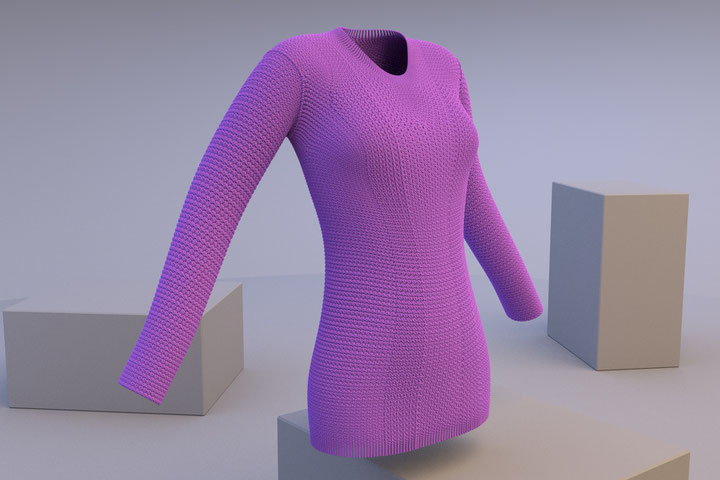A 1994 text from Norbert Bolz, The Meaning of Surfaces, highlighted one effect of contemporary media, that „Man responds to the stimuli of surfaces; and surface stimulation is our only source of information.” How predictive this was – especially as the devices that we are embedded within increasingly react to the slick tactility of primitive gestures of pointing, stroking, pinching, tapping, swiping. The utility of gesture has been sapped of its materiality as it instead becomes a performative interface that zooms into images, scrolls through web pages, ‚dials’ numbers, provides ‚verbal’ directions. Indeed a new textureless interface obliterates the feel of objects and substitutes for it an operational surface. A stroke is less a sensation than a maneuver, the object more functional, invisible, than reflexive, the result less corporeal than cerebral.
Nearly all communication reduced to rudimentary, primitive, gestures. Need a restaurant, point, get a taxi, point, communicate, point, find where you are, point, contact a ‚ friend,’ point, …. Pointing as survival tactic. The world compressed – literally – to pure digital; pointing degree zero, survival in as simple an interface as possible. An electronic public sphere stripped of any substance and intractably hooked–in to databases, the ‚hot–spot’ as a perverse protective zone dissociated from the social environment in favor of a parasitic dependence on connectivity emptied of presence and yet compulsively and paradoxically linked to social networks and communities in constant ‚contact.’
In the new surface culture we increasingly scan, browse, scroll, surf – skim the veneer of a dematerialized world to acquire the contingent sense of a fleeting reality. A ‚flickering signifier’ (in Katherine Hayles’ nice phrase) on an increasingly ubiquitous mobile apparatus cradled in the hand in stunning forms that, in the words of Giorgio Agamben, ‚desubjectify’ as they obliterate presence other than in the circuit of information.
Indeed Agamben’s important essay, What is an Apparatus?, provides an extension to Foucault. Focusing on the particular issue of representation, the text solidifies an understanding of the undeniable force of the apparatus as the quintessential medium: He writes:
„I shall call an apparatus literally anything that has in some way the capacity to capture, orient, determine, intercept, model, control, or secure the gestures, behaviors, opinions, or discourses of living beings. Not only, therefore, prisons, madhouses, the panopticon, schools, confession, factories, disciplines, judicial measures, and so forth (whose connection with power is in a certain sense evident), but also the pen, writing, literature, philosophy, agriculture, cigarettes, navigation, computers, cellular telephones and – why not – language itself, which is perhaps the most ancient of apparatuses – one in which thousands and thousands of years ago a primate inadvertently let himself be captured, probably without realizing the consequences that he was about to face."
(Giorgio Agamben, What is an Apparatus? in What is an Apparatus? And Other Essays. Stanford: Stanford University Press, 2009, p. 14.)
In this, the role of the apparatus as medium, discursively and materially, has again become a central issue. ‚The consequences’ of this comes, perhaps, as a surface apparatus that again hybridizes representation and in which all information is delivered from circuits (social and electronic) whose boundaries seem limitless and that has created an operational ‘attention economy’ that oscillates between distracted presence and preoccupied absence – what Linda Stone has called the state of ‚continuous partial attention.’ She writes:
„We pay continuous partial attention in an effort NOT TO MISS ANYTHING. It is an always–on, anywhere, anytime, any place behavior that involves an artificial sense of constant crisis. We are always in high alert when we pay continuous partial attention. This artificial sense of constant crisis is more typical of continuous partial attention than it is of multi–tasking.
[…]
In a 24/7, always–on world, continuous partial attention used as our dominant attention mode contributes to a feeling of overwhelm, over–stimulation and to a sense of being unfulfilled. We are so accessible, we’re inaccessible. The latest, greatest powerful technologies have contributed to our feeling increasingly powerless.”
<http://lindastone.net/qa/continuous-partial-attention/>
This evokes a fascinating reading made years ago in Geert Lovink’s Introduction to the Media Theory of ADILKNO (The Foundation for the Advancement of Illegal Knowledge founded in Amsterdam in 1983) of The Data Dandy, the figure who oddly ‚personifies’ a culture under the immense delusion that ‚all’ information is simultaneously available and is itself legitimating.
Presented at the ISEA conference in 1994, the text still reverberates in its prescience:
„The data dandy collects information to show off and not to transmit it. He is well – too well – or even exaggeratedly well–informed. Pointed questions are met with unwanted answers. He always comes up with something different. The phenotype of the data dandy is as feared as his historical predecessor, whose playground was the street and the salon. The elegant extravagance with which he displays the most detailed trivia shocks the practical media user. The data dandy makes fun of the gauged consumption and the measured intake of current news and amusement, and doesn't worry about an excess or overload of specialized knowledge. His carefully assembled information portfolio bespeaks no constructive motive. He goes to the greatest effort to appear as arbitrary as possible.
[…]
The data dandy considers his avatar in cyberspace the center of the digital universe. He knows he can only assume this position through the grace of the open structure of the network. His irksome interventions are preconditioned by public access, which he does not view as a means of changing the nonvirtual world. He recognizes the Net as a space to display oneself, not to communicate.”
< http://www.leonardo.info/isast/articles/datadandy.html>
The figure appears again in Henk Oosterling’s essay Radical medi@crity
„In order to protect himself from this double–edged sword post–modern man has turned himself into a capsular being. In order to counterweight the centripetal forces of acceleration and hybridization he has encapsulated himself in cars, planes, and digital devices, hiding behind window screens, TV screens and interfaces. From a radical medi@cre point of view these interfaces do no longer mediate reality. They produce reality.”
<http://mediageographies.blogspot.com/2005/02/henk-oosterling-radical-medicrity.html>
Increasingly produced for consumption rather than production, the pad, the pod, the tablet, the mobile ‚phone,’ the new surface (now also the name of the ultralight Microsoft is marketing) has become the indispensable signifier of an ersatz public sphere of imaginary bonds linked by perpetually updated profiles where connected appearance substitutes itself for physical presence. And indeed the alienating effect of technology has followed the entire history of modernity’s obsession with apparatuses and has found cogent expression in thinkers from Agamben to Zizek (and everywhere in–between).
And of course these media ‚dandies’ are not merely idiosyncratic digital renegades, they are the ciphers of shifting ideas about identity, selfhood, embodiment, presence. But they also are crucial figures in a informational sphere where profiling signifies far more than instant updates but that is embedded in systems that probe, log, track and commodify every data–point, transaction, purchase, GPS location, etc., in the insatiable pursuit for ways to, paradoxically, individualize (perhaps particularize is better) the kind of profiling that can identify every preference, every habit, every taste, every ‚friend,’ every ‚like’, ‚dislike,’ every journey, every purchase, every indiscretion...
It’s not too much to say that to confront this methodical data collection that one must choose, as Matt Blaze, Professor of Computer and Information Science at the University of Pennsylvania bluntly expresses it: „Don’t have a cellphone or just accept that you’re living in the Panopticon.” [quoted in That’s No Phone – That’s My Tracker by Peter Maass and Megha Rajagopalan – ProPublica, www.propublica.org> 7.13.2012) p. 4] Well maybe electropticon would be better – but the point is clear: to exist in the transparent network of intentional affiliations and simultaneously in an opaque network of unintended associations is an inevitable compromise. The prisoners subjected to Bentham’s panoptic gaze have been replaced with the willing complicity of vaguely user–friendly social networks where identity itself is subject to an algorithmic ‚gaze’ that displaces the individual in favor of the astonishing electronic traces they willingly (and perhaps unwittingly) deposit into digital repositories that gobble and mine data for the ever more finely tuned merchandizing of subjectivity.
Emptied of its physicality the split that Friedrich Kittler long–ago emphasized between physiology and information technology becomes not just manifest but omnivorous. The ‚era of nonsense’ (in Kittler’s phrase) began in the 1880s as the dissociation made possible by the ‚holy trinity’ of the ‚gramophone, film, typewriter’ highlighted the transfer of memory into the apparatus and conceptualized the separation of the body and representation.
Non–sense, this tremendous word, invokes the legacy of a history devoid not merely of presence, but of embodiment. Memory becomes disassociated from matter (to play on Bergson’s text), meaning detached from substance, and the senses emptied of their tangibility, a world discernible but not palpable, a world ceaselessly available and substituting itself for the actual passage of occurrences in the actual world. In a constant state of search, temporal presence is sundered. In this sphere Paul Virilio pleads that „we must at least resolve ourselves to losing the sense of our senses […] ready to lose our morphological illusions about physical dimensions […] which, in the electronic interface, affect the order of sensations” – a condition where „the absence of any immediate perception of concrete reality produces a terrible imbalance between the sensible and the intelligible.”
(Paul Virilio, The Lost Dimension, NY, Semiotext(e), pp. 48/52/31).
Not just sensations, but temporality as well. Nothing deteriorates in a sphere of an unremitting present – it’s just superceded. Perhaps one could say that presence and absence have become nearly synonymous. In this, experiential time approaches what Eric Kluitenberg identified as „a fatal attraction toward the immediate.” No real duration, only updating, no reflection, only incessant appearance and succession. This ferocious present is not a category of meaning and not a signifier of coherence. This surface present is a kind of vacuum poised in a troubling interstice […] a suspension poised only until the next present displays itself, it is anticipation in complicity with abjection.
This is one of the inevitable repercussions of a relationship with surface apparatuses that replace experience with semblance, that shatter on–going relationships with discrete events (except as they are incessantly digitized), that posit universality but deliver meticulously targeted specificity – the sad consequence of virtualizations that substitute immateriality for materiality, immediacy or connectedness for reality, profiling with identity – a ubiquitous experiential /i>cul de sac.
As Heidegger remarked in the 1966 Der Spiegel interview:
„Everything functions. That is exactly what is uncanny. Everything functions and the functioning drives us further and further to more functioning, and technology tears people away and uproots them […]”




